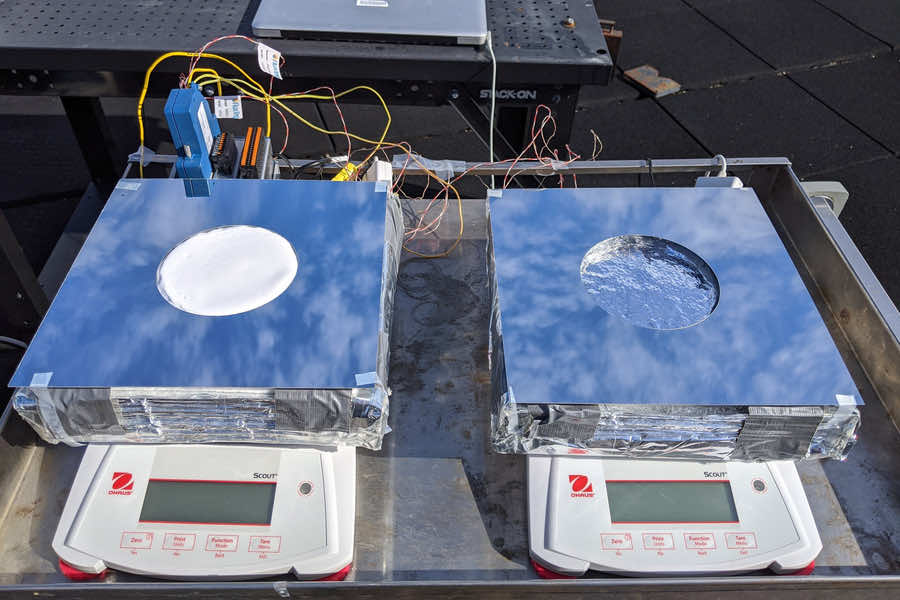Researchers at the Massachusetts Institute of Technology (MIT) have created an electric-free cooling system.
The technology, known as ‘passive cooling,’ might protect food crops and augment typical air conditioners in buildings while using only a little amount of water to function.
The device combines radiative cooling, evaporative cooling, and thermal insulation in a compact housing that resembles a solar panel and has a cooling capacity of 9.3 degrees Celsius. It is composed of three layers of material: an aerogel sponge-like polyethylene layer, a hydrogel layer, and a reflecting layer.
The aerogel is indeed very insulating while also enabling water vapour to travel through and cool the system; below that is the hydrogel, which is another sponge-like substance with pore gaps filled with water rather than air and serves as the water supply for evaporative cooling. The mirror-like layer then reflects any incoming sunlight that has reached it, redirecting it through the device rather than allowing it to heat the components, thereby lowering their thermal pressure.
The device was tested in a tiny container about 10 cm across, which the researchers claim demonstrates its efficiency in less-than-ideal settings.
“This technology combines some of the good features of previous technologies such as evaporative cooling and radiative cooling,” said MIT postdoctoral researcher Zhengmao Lu.
Combining these two techniques “illustrates that you may achieve substantial food life extension even in regions with high humidity,” which limits the effectiveness of conventional radiative or evaporative cooling methods. In humid regions, cooling may preserve food for up to 40% longer and three times longer.
However, the aerogel costs more to produce since it needs specialised machinery to extract solvents without damaging it. So it’s possible that using other materials or freeze-drying may get the same result for less money.
“The aerogel is the only material that’s a product from the lab that requires further development in mass production,” Mr Lu said.
“By combining evaporative cooling, radiative cooling, and insulation, it has a better cooling performance and can be effective in a wider range of climates than evaporative cooling or radiative cooling alone,” said Xiulin Ruan, a professor of mechanical engineering at Purdue University.
“The work could attract significant practical applications, such as in food preservation if the system can be made at a reasonable cost.”
The findings were published in the journal Cell Reports Physical Science.
Source: MIT

